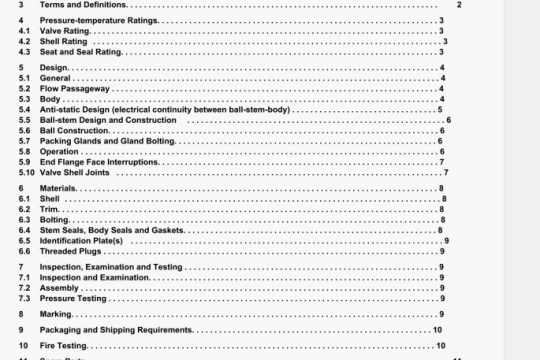AWS API-M:2008 pdf download
AWS API-M:2008 pdf download.Study Guide for API Standard 1104 Welding of Pipelines and Related Facilities TWENTIETH EDITION.
The definitions of welding terms in this section of API I 104 arc based on definitions in AWS A3.0. Strindurd Welding Terms and De/iniiions. with additions and modifwations. Additional key terms and definitions nor included in this section of the code appear below
Bend test. A soundness lest in which the indisidual performing the test places the specimen across the shoulders of a die with the surface to be tested facing down. A plunger positioned above the area of interest is forced toward the die, causing the specimen to bend into a U shape.
bull weld. A nonstandard term for a weld in a butt joint, which is a joint between two members aligned approximately in the same plane.
classification number. A number in an AWS numbering system chat identifies dcctrodcs and filler metals according to their chemical composition and operating characteristics. Examples include for SMAW—E70I X. for GMAW—-ER7OS.6. and for GTAW—EWfli-2.
defect. A rejectable imperfection that impairs the suitability of a structure for its intended purpose. Sec API II 04 Section 9 for a list of types of imperfections.
destruclic testing. Testing that renders the material or pail useless for service, performed to obtain information on material properties and soundness.
discontinuity. An irregularity in an otherwise uniform structure. Sec API I 104 Section 9 for a list of types of imperfections and the criteria that may allow them in a weldment. API 1104 does not usc the word discontinuity hut rather calls them indications or impcrkctions. Not all discontinuitics. imperfections, or indications are rejected.
essential sariable. A component of a welding procedure specification that requires requalification if changed beyond certain limits specified in the applicable code.
A weld metal build-up. raised above the surface Ol the parent metal in excess of what is required to fill a groove joint on the side of the base metal from which welding was done.
laying surface. The mating surfaces ot two parts that are to be welded together.
filler metal. The metal or alloy to he added in making a brazed, soldered, or welded joint.
fillet weld. A weld of approximately triangular cross section Joining two surfaces approximately at right angles.
SECTION 4—SPECIFICATIONS
4.1 Equipment This section calls for good judgment. sound engineering. suitable operating practices.
and attention to safety. A measure of suitability is to ensure that the right equipment to
reali,c all of the variables of the welding proccdure is being used in a safc manner.
4.2 Materials 4.2.1 Pipe and Fittings
API 110 says that pipe and Iiuings must conform to API Spec 51. or any applicable ASTM specifications. hut it then si.Iics that chemically and mechanically similar materials also are acceptable. This means you mus identity the chemical and mechan ical properties of any material not included in those specifications to ensure its compatibility.
4.2.2 Filler Metal
4.2.2.1 Type and Sst
All 1111cr metals must conform to one ol’ the AWS filler metal specifications, or IIrns be qualified for use according to the requirements of API 1104. Section 5.
API 1104 Table 1. in Section 5 on page II. divides 1111cr metals into nine groups. based on electrode characteristics and the processes that employ those electrodes. The columns in Table I list:
• Group numbers for filler metals, electrodes, and fluxes.
• AWS specification numbers.
• F,lectrodes and filler metals by classification number.
• Fluxes by classification number.
Be attentive to the footnotes, which Imklify the requirements for use of certain electrodes, filler metals, or lluxcs under particular circumstances.
4.2.2.2 Swrage and Handling of Filkr IIeials and Fluxes
API I I 04 requires protection of filler metals and fluxes from deterioration and excessive changes in moisture. Low-hydrogen electrodes (classification number ending in 5. 6. or 8) must remain moisture-free. Although it is not mentioned in great detail in API 1104. electrode manufacturers recommend that low hydrogen electrodes be stored in a heated. vented oven at a prescribed temperature after opening their container.




